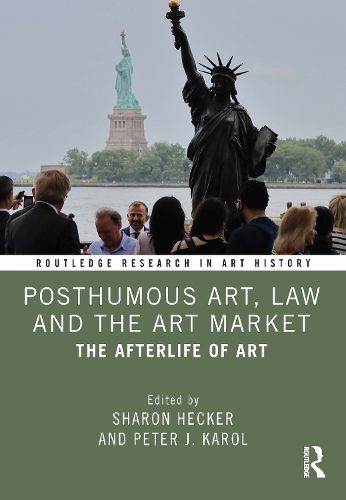Readings Newsletter
Become a Readings Member to make your shopping experience even easier.
Sign in or sign up for free!
You’re not far away from qualifying for FREE standard shipping within Australia
You’ve qualified for FREE standard shipping within Australia
The cart is loading…






This book takes an interdisciplinary, transnational and cross-cultural approach to reflect on, critically examine and challenge the surprisingly robust practice of making art after death in an artist's name, through the lenses of scholars from the fields of art history, economics and law, as well as practicing artists.
Works of art conceived as multiples, such as sculptures, etchings, prints, photographs and conceptual art, can be-and often are-remade from original models and plans long after the artist has passed. Recent sales have suggested a growing market embrace of posthumous works, contemporaneous with questioning on the part of art history. Legal norms seem unready for this surge in posthumous production and are beset by conflict across jurisdictions. Non-Western approaches to posthumous art, from Chinese emulations of non-living artists to Native American performances, take into account rituals of generational passage at odds with contemporary, market-driven approaches.
The book will be of interest to scholars working in art history, the art market, art law, art management, museum studies and economics.
$9.00 standard shipping within Australia
FREE standard shipping within Australia for orders over $100.00
Express & International shipping calculated at checkout
This book takes an interdisciplinary, transnational and cross-cultural approach to reflect on, critically examine and challenge the surprisingly robust practice of making art after death in an artist's name, through the lenses of scholars from the fields of art history, economics and law, as well as practicing artists.
Works of art conceived as multiples, such as sculptures, etchings, prints, photographs and conceptual art, can be-and often are-remade from original models and plans long after the artist has passed. Recent sales have suggested a growing market embrace of posthumous works, contemporaneous with questioning on the part of art history. Legal norms seem unready for this surge in posthumous production and are beset by conflict across jurisdictions. Non-Western approaches to posthumous art, from Chinese emulations of non-living artists to Native American performances, take into account rituals of generational passage at odds with contemporary, market-driven approaches.
The book will be of interest to scholars working in art history, the art market, art law, art management, museum studies and economics.